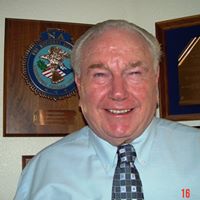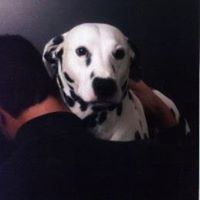Gene M Rogers
age ~78
from Rancho Palos Verdes, CA
- Also known as:
-
- Gene Kathy Rogers
- Gene Rogers Rogers
- Eugene Paul Rogers
- Phone and address:
- 556 Via Del Monte, Palos Verdes Estates, CA 90274
Gene Rogers Phones & Addresses
- 556 Via Del Monte, Palos Verdes Peninsula, CA 90274
- Rancho Palos Verdes, CA
- 1424 Wycliff Ave, San Pedro, CA 90732
- Jackson, MS
- Huntington Beach, CA
- Long Beach, CA
- Rllng Hls Est, CA
Name / Title
Company / Classification
Phones & Addresses
Manager
Sound Obsessions Inc
Auto Radios & Stereos - Wholesale & Manufacturers
Auto Radios & Stereos - Wholesale & Manufacturers
4520 44 St, Lloydminster, SK S9V 0G3
3068252277, 3068255541
3068252277, 3068255541
Chief Technologist, Space Systems Engineering
The Boeing Company
Wood Kitchen Cabinets
Wood Kitchen Cabinets
Pob 5271, San Pedro, CA 92647
President
Summit Consulting Intl
General Contractors-Nonresidential Buildings,...
General Contractors-Nonresidential Buildings,...
18662 Macarthur Blvd # 104, Irvine, CA 92612
Website: summitci.com
Website: summitci.com
President
Summit Consulting International
Facilities Support Services Engineering Services
Facilities Support Services Engineering Services
18662 Macarthur Blvd, Irvine, CA 92612
18881 Von Karman Ave, Irvine, CA 92612
9492226150
18881 Von Karman Ave, Irvine, CA 92612
9492226150
Manager
Sound Obsessions Inc
Auto Radios & Stereos - Wholesale & Manufacturers
Auto Radios & Stereos - Wholesale & Manufacturers
3068252277, 3068255541
President
GENE ROGERS CHEVRON, INC
Gas Stations
Gas Stations
14501 Red Hl Ave, Tustin, CA 92780
7148326292
7148326292
Resumes

Senior Principal Systems Engineer
view sourceLocation:
22118 41St Pl south, Kent, WA 98032
Industry:
Computer Software
Work:
Boeing - Huntington Beach CA since 1985
Chief Technologist- Network & Space Systems
Chief Technologist- Network & Space Systems
Education:
California State University-Dominguez Hills
Various, Physics, Law, Engineering,
Various, Physics, Law, Engineering,
Skills:
Space Systems
Physics
Systems Engineering
Engineering Management
Electronics
Enterprise Architecture
Program Management
Management
Satellite
System Architecture
Technology Management
Proposal Management
Technology Development
Physics
Systems Engineering
Engineering Management
Electronics
Enterprise Architecture
Program Management
Management
Satellite
System Architecture
Technology Management
Proposal Management
Technology Development

Gene Rogers
view sourceSkills:
Business Development
Sales
Natural Gas
Sales
Natural Gas

Gene Rogers
view source
Gene Rogers
view source
Gene Rogers
view source
Gene Rogers
view source
Gene Rogers
view sourceSkills:
Leadership
Photoshop
Management
Microsoft Office
Microsoft Word
Powerpoint
Research
Microsoft Excel
Training
Sales
Photoshop
Management
Microsoft Office
Microsoft Word
Powerpoint
Research
Microsoft Excel
Training
Sales

Gene Rogers
view sourceVehicle Records
-
Gene Rogers
view source -
Address:8633 Portola Ct UNIT 15C, Huntington Beach, CA 92646
-
VIN:1HGCM56887A086594
-
Make:HONDA
-
Model:ACCORD
-
Year:2007
Isbn (Books And Publications)

License Records
Medical Doctor
License #:
17778 - Expired
Issued Date:
Oct 10, 1972
Renew Date:
May 1, 2013
Expiration Date:
Apr 30, 2015
Type:
Physician
Us Patents
-
Cryogenic Liquid Heat Exchanger System With Fluid Ejector
view source -
US Patent:61640786, Dec 26, 2000
-
Filed:Mar 4, 1999
-
Appl. No.:9/262796
-
Inventors:Tibor I Lak - Huntington Beach CA
Gene Rogers - San Pedro CA
James F. Weber - Moorpark CA
Michael V. Merlin - Anaheim CA
Timothy L. Gaynor - Cypress CA
John E. Davis - Claremont CA
David L. Gerhardt - Redondo Beach CA -
Assignee:Boeing North American Inc. - Seal Beach CA
-
International Classification:F17C 502
-
US Classification:62 471
-
Abstract:A cryogenic liquid heat exchanger system has a subatmospheric pressure reservoir, a tube, and an initial fluid ejector. The sub-atmospheric pressure reservoir has a vacuum exhaust. The tube extends through the reservoir. The initial fluid ejector has a suction chamber inlet that is functionally connected to the reservoir vacuum exhaust. The system may have a plurality of fluid ejectors connected to one or more exhausts either in series or parallel. The initial fluid ejector may receive one or more pressurized fluid streams, and the streams may be steam. A process for generating sub-atmospheric pressures in a cryogenic fluid heat exchanger reservoir includes the step of discharging an initial fluid stream into an initial fluid ejector having a suction chamber functionally connected to an exhaust of the reservoir. A process for generating sub-atmospheric pressures in a cryogenic fluid heat exchanger reservoir includes the step of using a fluid ejector to reduce the pressure in the reservoir. In either process, cooling cryogenic fluid is directed through the reservoir.
-
Cryogenic Densification Through Introduction Of A Second Cryogenic Fluid
view source -
US Patent:61519006, Nov 28, 2000
-
Filed:Mar 4, 1999
-
Appl. No.:9/262754
-
Inventors:Tibor I Lak - Huntington Beach CA
Gene Rogers - San Pedro CA
James F. Weber - Moorpark CA
Michael V. Merlin - Anaheim CA
Timothy L. Gaynor - Cypress CA
John E. Davis - Claremont CA
David L. Gerhardt - Redondo Beach CA -
Assignee:Boeing Northamerican, Inc. - Seal Beach CA
-
International Classification:F17C 1100
F17C 502
F25B 1900 -
US Classification:62 461
-
Abstract:A system and method for cooling a first cryogenic liquid in a vessel comprises the steps of directing a second cryogenic into the first cryogenic fluid and releasing gas from the vessel. The first cryogenic fluid has a boiling point that is higher than the boiling point of the second cryogenic fluid. Directing the second cryogenic fluid into the first cryogenic fluid results in the second fluid cooling the first fluid and the second fluid vaporizing. The vaporized fluid is released as a gas from the vessel. The vessel may be a propellant tank for a space vehicle. The first and second cryogenic fluids are delivered from supplies located outside of the vehicle. The first cryogenic liquid may be oxygen and the second cryogenic liquid may be nitrogen, neon, or helium. In another aspect of the invention, the first cryogenic liquid may be hydrogen and the second cryogenic liquid may be helium.
-
Slush Producing Process And Device
view source -
US Patent:61313971, Oct 17, 2000
-
Filed:Mar 4, 1999
-
Appl. No.:9/262787
-
Inventors:John E. Davis - Claremont CA
Tibor I. Lak - Huntington Beach CA
Gene Rogers - San Pedro CA
James F. Weber - Moorpark CA
Michael V. Merlin - Anaheim CA
Timothy L. Gaynor - Cypress CA
David L. Gerhardt - Redondo Beach CA -
Assignee:Boeing North American Inc. - Seal Beach CA
-
International Classification:F17C 500
-
US Classification:62 541
-
Abstract:Slush is made from a liquid using slush making systems or according to slush making processes. A jacketed vessel of the processes and the systems has an interior wall that defines an interior space. The interior space comprises a top and a bottom. The interior space has an average overall cross-sectional area taken through a vertical axis extending generally between the top and the bottom. The interior space also has a collection portion having an average collection portion cross-sectional area taken through the vertical axis that is less than the average overall cross-sectional area. The liquid is placed into the interior space and the interior walls are cooled. Slush forms on the interior walls and migrates to the collection portion. The collection portion is located at the interior space bottom when the slush density is higher than the liquid density and the collection portion is located at the interior space top when slush density is less than the liquid density. To facilitate the migration of the slush to the collection portion, at least a conical portion of the interior space has the general shape of a cone and the collection portion is located in the proximity of an apex of the conical portion, thereby helping to funnel the slush to the collection portion.
-
Combined Diffuser And Recirculation Manifold In A Propellant Tank
view source -
US Patent:60734507, Jun 13, 2000
-
Filed:Mar 4, 1999
-
Appl. No.:9/262755
-
Inventors:Tibor I Lak - Huntington Beach CA
Gene Rogers - San Pedro CA
James F. Weber - Moorpark CA
Michael V. Merlin - Anaheim CA
Timothy L. Gaynor - Cypress CA
John E. Davis - Claremont CA
David L. Gerhardt - Redondo Beach CA -
Assignee:Boeing North American - Seal Beach CA
-
International Classification:F17C 502
-
US Classification:62 471
-
Abstract:A cryogenic propellant tank system and process for densifying cryogenic liquid propellant comprises a tank with a combined manifold, a combined manifold line, a pressurizing gas line, and a vent line. The combined manifold is located in the tank. The combined manifold line functionally connects the combined manifold to a chilling system. The pressurizing gas line and the vent line are also functionally connected to the combined manifold line. The tank may be disposed in a vehicle. The manifold is disposed proximate the top of the tank. The chilling system may be a heat exchanger/filling system. The process for filling the tank comprises the steps of charging the tank with cryogenic liquid propellant, venting gases in the tank, densifying the cryogenic liquid propellant, and pressurizing the tank. The tank is charged with the cryogenic liquid propellant such that the orifices in the combined manifold are submerged. The gases in the tank are vented through the combined manifold and out of the tank.
Plaxo

Gene Rogers
view sourceDavie, FloridaEljefe at Gene Rogers Associates We are in the executive search & recruiting business, serving the financial industry, banks, trust, investment and mortgage companies for over 39 yrs.

Gene Rogers
view sourcexpedx Division of International Paper

Gene Rogers
view sourceAttic Chat Productions

Gene Rogers
view sourceRetired
Flickr
Myspace
Googleplus

Gene Rogers

Gene Rogers

Gene Rogers

Gene Rogers

Gene Rogers

Gene Rogers

Gene Rogers

Gene Rogers
Classmates

Gene Rogers
view sourceSchools:
Delcambre High School Delcambre LA 1953-1957
Community:
Celeste Granger, Keith Piper, Jessica Babineaux

Gene Rogers
view sourceSchools:
Jefferson Elementary School Corona CA 1944-1947
Community:
Jim Perry

Gene Rogers
view sourceSchools:
Shorewood High School Shorewood WI 1968-1972
Community:
Gaylord Hanson, Pat Margoles, Jim Wood

Gene Rogers
view sourceSchools:
Manly Junior High School Louisville KY 1947-1951
Community:
James Eastridge, Jimmie Crowe, Wayne Blanchard, John Cole, Nathaniel Brewer, Bettyjoe Roberts

Gene Rogers
view sourceSchools:
St. Francis De Sales High School Denver CO 1966-1970
Community:
James Berger, Alicemarie Adams, Terrie Firko, Mary Grogan

Gene Rogers
view sourceSchools:
Wichita Falls High School Wichita Falls TX 1965-1969
Community:
Terrance Stayton

Gene Rogers
view sourceSchools:
Galena Park High School Galena Park TX 1981-1985
Community:
George Mclemore

East Bank High School, Ea...
view sourceGraduates:
Gene Rogers (1973-1977),
john mcbrayer (1963-1967),
Mary Mays (1948-1952),
Laura Lynn Wright (1965-1969)
john mcbrayer (1963-1967),
Mary Mays (1948-1952),
Laura Lynn Wright (1965-1969)
Youtube

Gene Rogers
view source
Gene Rogers
view source
Gene Rogers
view source
Gene Barry Rogers
view source
Gene Rogers
view source
Gene Rogers
view source
Gene Rogers
view source
Gene Rogers
view sourceGet Report for Gene M Rogers from Rancho Palos Verdes, CA, age ~78

















